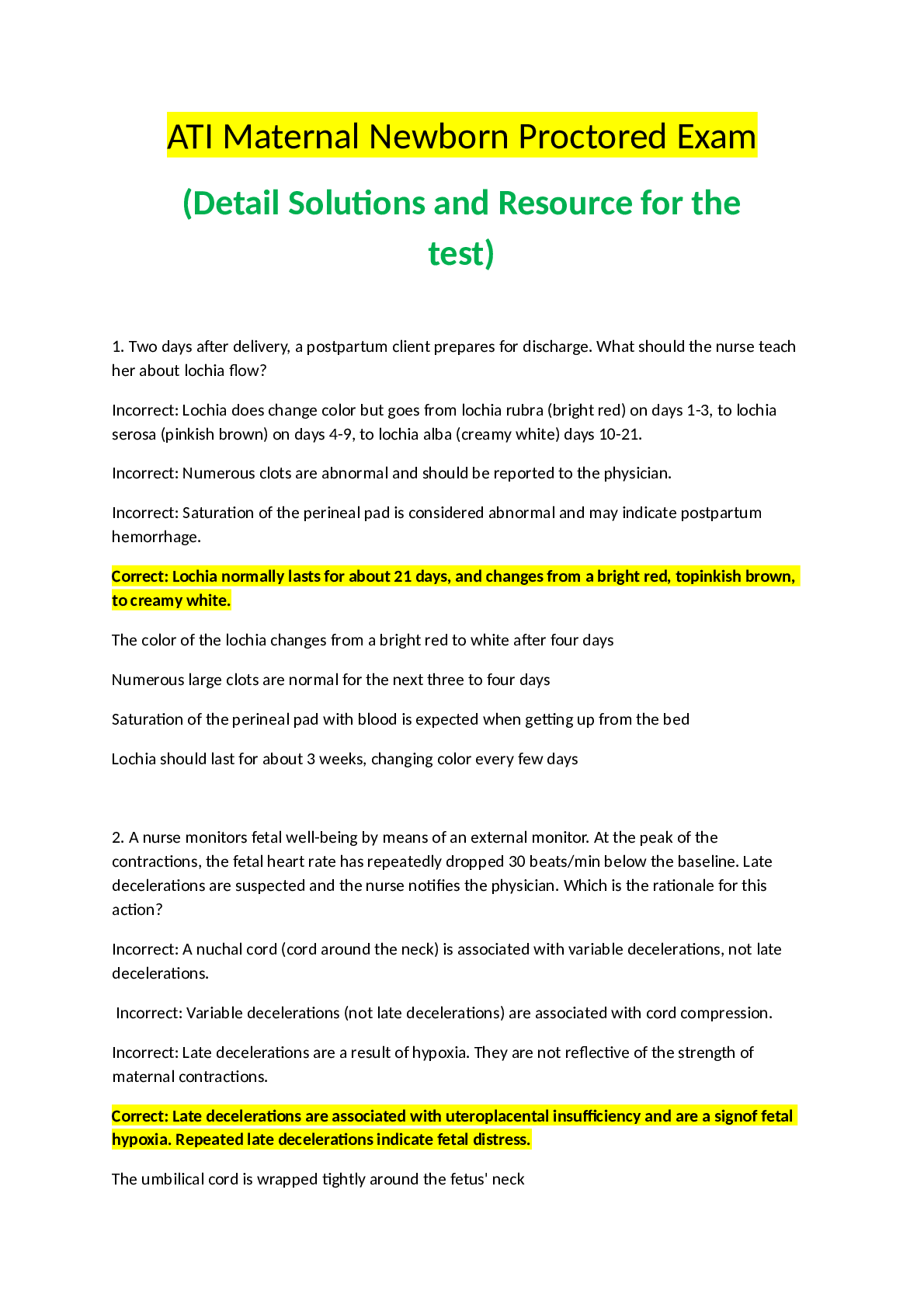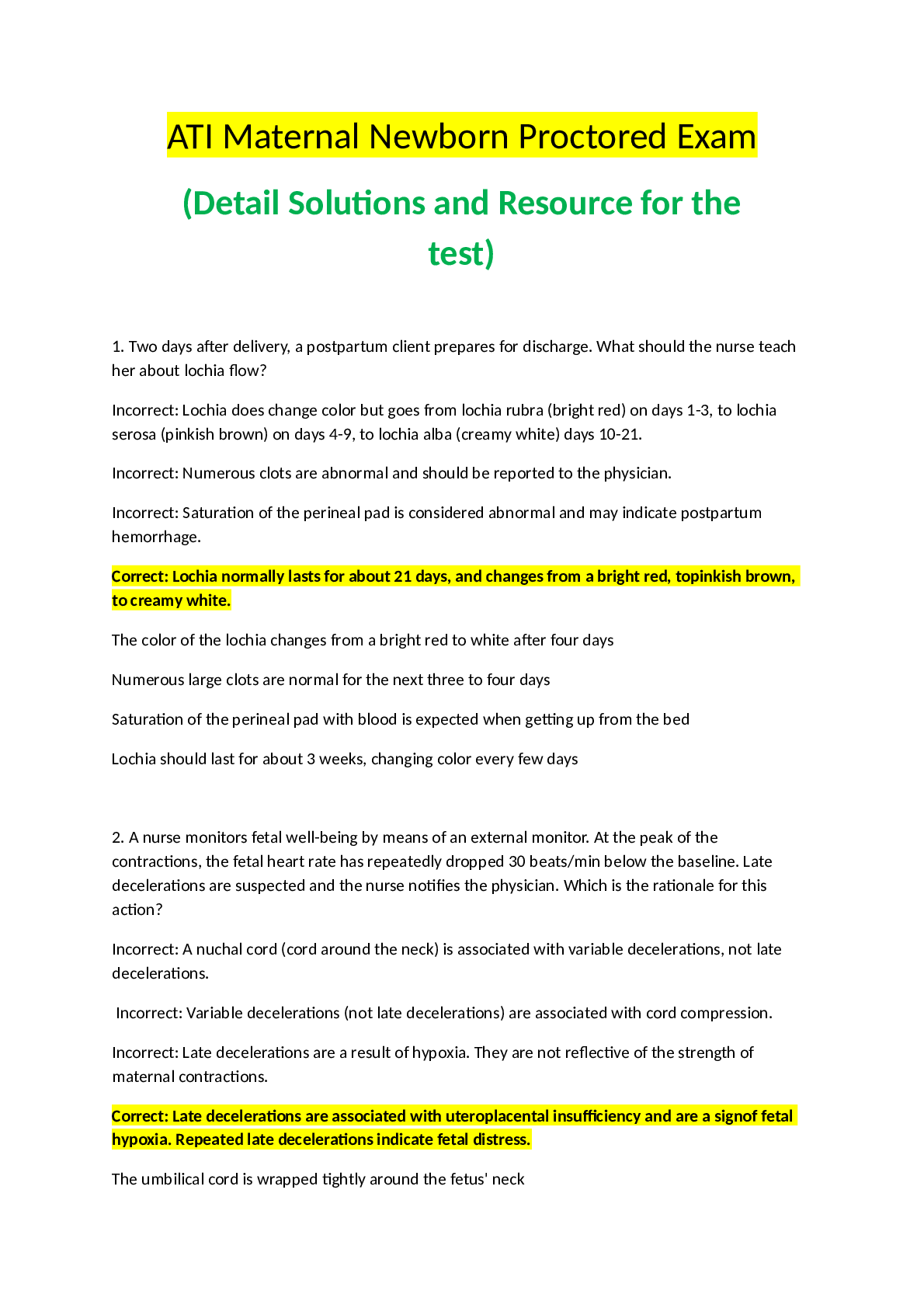ATI Maternal Newborn Proctored Exam 2020
Course
Project Management
Subject
Chemistry
Category
Questions and Answers
Pages
10
Uploaded By
ATIPROS
Preview 2 out of 10 Pages


Download all 10 pages for $ 7.74
Reviews (0)
$7.74
